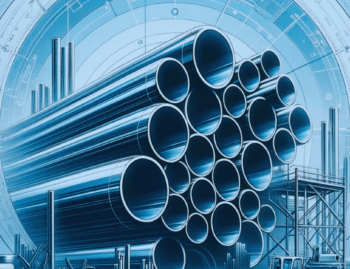The Virtues of Steel
The development of the Model T in 1908 heralded the rise of an important new automotive sector in the United States. For the first time, Americans in large numbers began driving motor vehicles. This innovation owed a lot to the invention of the assembly line, a process contributing to mass production. Yet early car manufacturers in the USA also benefited from the ready availability of steel, a malleable, strong, durable metal.
Steel holds many benefits for automakers. Just consider a few of its most useful properties:
- Factories use steel to produce a variety of different engine components and automotive exteriors;
- Steel surfaces will accept paint readily;
- Steel auto frameworks strengthen the bodies of vehicles;
- Steel readily undergoes recycling;
- Steel remains a very economical metal for automotive fabrication.
For all these reason, automakers have depended heavily upon steel for decades as an important metal in the automotive industry. This strong, flexible alloy still figures prominently in manufacturing today, too.
New Innovations
Yet just as technological advances have created significant changes in many fields, steel manufacturing in this decade has witnessed some incredible recent innovations. For instance, currently several promising processes for producing steel have created widespread research interest. Scientists have recently experimented with breakthrough technologies, such as hydrogen flash smelting and molten oxide electrolysis. The typical steel manufacturer in the United States in this century produces far fewer potentially damaging carbon dioxide emissions during the creation of a ton of steel than during previous eras.
One of the most promising technologies for the automotive industry involves the use of nano-manufacturing techniques. These process can enhance the strength of steel by as much as tenfold, and also render the metal far more resistant to the degenerative impacts of corrosion. By gaining better control over the condition of steel at a microscopic level, metallurgists have discovered ways to use nano-manufacturing techniques to significantly enhance different desired properties of steel. For instance, they can cause the metal to resist the development of cracks more effectively, ultimately leading to stronger, more crash-resistant automotive frames.
Cars of The Future
Many of these developments suggest that in the near future, vehicles composed of steel frameworks will display superior crash-resistant qualities. Precision engineering will allow many mechanical parts to function effectively for longer periods of time.
Additionally, the nano-engineered exteriors of modern automobiles will display an improved ability to resist scratches, dents and unsightly corrosion.
An Essential Automotive Metal
The lightweight, strong properties of steel continue to enable automobile manufacturers to design and develop useful vehicles. As steel technology benefits from additional research and development, useful vehicle lifespans will possibly increase. Drivers benefit from these advances in steel technology.











